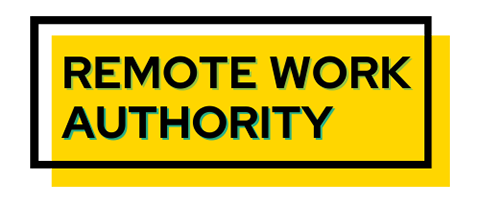Successfully working remotely is a balancing act. You need to balance the distractions of your home and social life, and the endless thoughts that pass through your head. To get through your days as smoothly and productively as possible, you must set remote work boundaries.
There’s no denying that working from home has uncountable benefits. However, it takes some time to get into your groove and learn how to make it work for you.
A Zippia survey shows that 86% of people working from home full-time experience burnout, 67% feel like they must always be available, and only 30% take the weekends off.
If you were going into the office every day, you wouldn’t be likely to answer emails after hours and do extra work on the weekends, both of which can lead to burnout. Working from home shouldn’t be any different. You are in control of your concentration and productivity. If you are struggling, it may be time to reconsider your remote work boundaries.
Try implementing the following:
1. Work Boundaries
Without going into the office every day, some professional boundaries are forgotten or disrespected. To ensure a healthy separation between work and home life, consider setting these boundaries with your employees or boss.

- Communicate your availability. Let your boss or employees know what hours you are available to work and when you are unavailable. Ideally, this will help them to plan accordingly and avoid asking you to work outside of your hours.
- Set boundaries around communication. Let your boss or employees know how you prefer to communicate and when you are available to respond to emails, calls, and texts. Setting these types of “office hours” will help to avoid distractions and ensure that you are able to focus on your work.
- Set boundaries around tasks. Be clear about what tasks you are responsible for and what tasks are not your responsibility. This will help you avoid feeling overwhelmed and ensure that you are able to complete your work on time.
- Call out or take time off when you need to. Just because you aren’t physically stepping into an office, you still deserve time off when you’re feeling sick or going on vacation. It’s not fair to you or the company to have you working when you’re distracted or feeling lousy.
2. Family/Friends Boundaries
No one enjoys hanging out with a friend who is constantly distracted by their phone or computer while you’re trying to have a conversation with them. Be present when you’re with your friends and family; do your best to separate your work from your family and social life.

- Communicate your work schedule to your friends and family. Let them know when you are available to chat or take breaks. Depending on the age of your children, hanging a sign on your office door when you’re not to be interrupted may be useful.
- Be unavailable. Put your phone in airplane or focus mode to avoid being distracted by incoming texts or calls.
If you and your partner both work from home and have children, you may need to work together to create a schedule that respects both your time and ensures one adult can devote adequate time and attention to the children.
3. Personal Boundaries
On top of creating boundaries with your career and the people you surround yourself with, you must also set personal boundaries. Hold yourself accountable and respect your time, boundaries, and decisions.

Here are some tips on how to set personal boundaries when working from home:
- Set clear work hours and stick to them. Otherwise, you’ll end up working longer, staggered hours and severely blurring the line between work and personal hours.
- Don’t check work emails or messages outside of work hours. Don’t let an after-hours issue negatively impact your free time.
- Take breaks throughout the day to avoid burnout. Get up and move around every 20-30 minutes to avoid getting too bogged down in your work.
- Set up a dedicated workspace in your home. Working from your bed or couch may sound cozy, but a dedicated workspace will help you get into the groove of work and stay focused. Getting dressed also helps.
- Take care of yourself both physically and mentally. Nourish your body with the necessary foods that give you brain power and don’t make you sleepy. Make time to stretch or exercise regularly to maintain good blood circulation and overall wellness.
On your days or hours off, take time to do things that bring you joy, such as exercising, reading, or spending time with friends and family. Do your best not to enter your workspace when you’re not working to help you mentally separate work/personal time.


